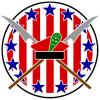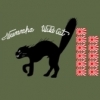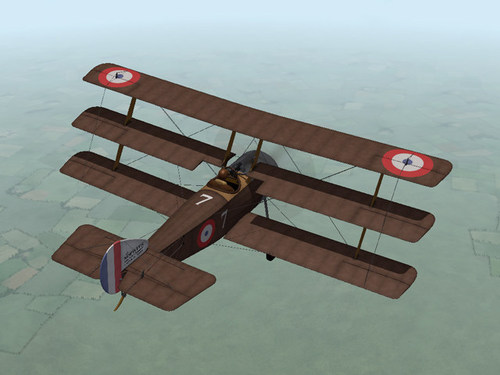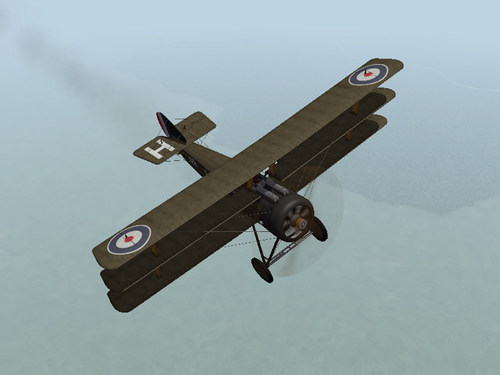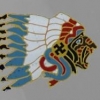Leaderboard
Popular Content
Showing most liked content on 12/16/2020 in Files
-
3 points
Version 1.0.0
117 downloads
The Sopwith Triplane, also known as the "Tripe" or "Tripehound," was introduced at the end of 1916. By mid 1917, several British and French naval squadrons were equipped with the plane. The narrow chord of the three staggered wings gave the pilot an excellent field of view and gave the plane an exceptional rate of climb as well as outstanding agility. The Triplane was considered an exceptional fighter and stayed in service until replaced by the Sopwith Camel in late 1917. Captured Sopwith Triplanes inspired the development of the more famous Fokker Dr.1. The first planes produced had a tail plane nearly identical to the tail of the Sopwith Pup. Early planes also had a 110hp Clerget engine. A smaller tail plane was introduced early in 1917. The engine was also replaced with a more powerful 130hp Clerget engine. This is an early version of the Sopwith Triplane with a wider tail and lower powered engine. It has two skins, one French and one British, with appropriate decals. Note - these skins are NOT interchangeable with the skins for my other Sopwith Triplanes. A fully functional cockpit is included, along with my skinning templates. I have included a sound file for the Clerget engine, but you may already have it. Credits Although he's very busy these days, Ojcar found the time to make the FM for the early Sopwith Triplane. My thanks to him. I have included a sound file for the Clerget engine created by Nixou. It has been used on other planes, so you may already have it. I included it with this download in case you don't. Historical Note The 110 hp Clerget engine was the 9Z. I don't have a sound file for the 9Z so I used a sound for the Clerget 9B instead. Installation Instructions For FE1 - Unzip the file and move the folder named "SopwithTriplane" into the FirstEagles/Objects/Aircraft folder. I have included Nixou's sound for the Clerget engine. It has been used with other planes, so you may already have it. If you don't, copy the file named "clerget9b2m2" from my Sounds folder into your FirstEagles/Sounds folder. For FE2 - Unzip the file and move the folder named "SopwithTriplane" into the FirstEagles/Objects/Aircraft folder. Then in the FirstEagles/Objects/Decals folder, create new folder named "SopwithTriplane". Move the folder named "D" from the Aircraft/SopwithTriplane folder into the Decals/SopwithTriplane folder you just made. I have included Nixou's sound for the Clerget engine. It has been used with other planes, so you may already have it. If you don't, copy the file named "clerget9b2m2" from my Sounds folder into your FirstEagles/Sounds folder. -
2 points
Version 1.0.0
661 downloads
This has been a labor of love for my all-time favorite fighter aircraft. The service period of this aircraft fits perfectly with the time period that the Strike Fighters 2 game engine gives its best: Gun armed jet fighters with short range missiles and early/ limited avionics. Changes: - The ‘SF2V Air & Ground War Expansion v.2.0 Gold’ and ‘F-8 DATA & LOADOUT v1.0 update’ here at CA were used as a starting point for this project. - Maximum G has been changed to 6.3 which is the airframe structural limit in all NATOPS publications. - There are automatically operating ‘fake’ leading edge droops (slats) that simulates the pilot being able to lower them a few degrees with a button on the throttle for cruising flight and manoeuvring flight (aka dog fighting). By ‘fake’ I mean they are not player operated in SF2 or linked to the 3D model but the aerodynamic effect is realistically simulated. You will notice the droop indicator in the cockpit will change with them however. If they were manually controlled in the game the AI would not use them correctly. - Single AIM-9 missiles and rails can be loaded instead of the Y-racks on all F-8 variants. This is done at the loadout screen (and by the loadout.ini file) it is set up so you cannot load single missiles/ rails and double missiles/ Y-racks at the same time. - Cannons harmonized as per NATOPS manual and gun accuracy adjusted to real world levels. - Adjustment to most decal positions and inclusion of Squadron codes on the wings. - Additional details added to most stock skins. - Additional squadron specific higher resolution skins with more accurate markings for that particular squadron. - Included for F-8J (69) is a proposed SEA camo overpaint for the VF-211 aircraft on detachment at Udorn in early 1972 to school USAF pilots in Dogfighting. The repaint was initially agreed to but it would have added 1200lbs so it was abandoned. If you wish to use it and fly DACT against USAF Phantoms you can load the extra 1200lb at the load out screen via a unique station specific hard point. - Overhaul of each data.ini and avionics.ini to bring them in line with the information in the F-8 NATOPS manuals, NATOPS supplements and F-8 Tactics manual. - More detailed pilots and ejection seats. - Fully compatible with ‘SF2V Air & Ground War Expansion v.2.0 Gold’ or Third Wire SF2V campaigns. - Additional year specific aircraft to better reflect physical and avionic changes. As well as correcting a few mistakes and omissions by Third Wire. - Below is the updated list of F-8 Crusader variants with the original Third Wire description where appropriate and the specific major changes made in addition to the general ones listed above: F-8C The F-8C (F8U-2) entered service in 1959. F-8C is powered by J57-P-16 afterburning turbojet and can reach speed of Mach 1.6. - Missing radar symbology added and radar performance/ parameters corrected. The radar cursor for selecting a target is a long horizontal line that moves up from the bottom of the scope and is only adjustable in range and not azimuth to select a specific radar contact. F-8C (66) In 1966, F-8C received ALQ-51 ECM and chaff dispensers under project "SHOEHORN", after A-4 and F-4 were upgraded. The cannon ammo capacity is reduced slightly to make room for the ECM black box. - Uses the TW F-8D model modified into a F-8C in order for it to have the Y-rack Fuselage weapon rails. F-8D The F-8D (F8U-2N) was the all-weather interceptor version, entering service in 1960. It is equipped with AN/APQ-83 radar and more powerful J57-P-20 engine. - Missing radar symbology added including steering circle, aiming dot, break X and missile max range. F-8D (66) F-8D also received ALQ-51 ECM and chaff dispensers under project "SHOEHORN" in 1966. The cannon ammo capacity is reduced slightly to make room for the ECM black box. F-8E The F-8E (F8U-2NE), entering service in 1962, was the final production version of the Crusader. It is equipped with better AN/APQ-94 radar, and two underwing pylons for air-to-ground ordnance. - Radar frame lock, range and shoot cue lights all completely changed and now function correctly. See screenshot for more information. - Missing radar symbology added including range rate circle, which also doubles as the steering circle, aiming dot, break X and missile max range. - Missile firing order and cockpit weapon station section dial corrected. F-8E (66) F-8E also received ALQ-51 ECM and chaff dispensers under project "SHOEHORN" in 1966. The cannon ammo capacity is reduced slightly to make room for the ECM black box. - Significant use of the AIM-9C as after a lot of research it turns out they were commonly carried over Vietnam in this period, notably by VF-211. F-8E(FN) The F-8E(FN) is the French Aeronautique Navale version of the F-8 armed with Matra R.530 missiles. Nicknamed "Le Crouze" by the French crew, it operated off Clemenceau-class carriers from 1964 to 1994 until they were upgraded to F-8P standard. F-8E(FN) introduced many of the features, such as double-hinged leading edge flaps and drooping ailerons, that were later incorporated into remanufactured F-8J for the US Navy. - Equipped with the nose mounted IRST system like the USN F-8D and E. - This is the TW F-8J model modified into a F-8E(FN) so the DLC is NOT required. - Radar frame lock, range and shoot cue lights all completely changed and now function correctly. See screenshot for more information. - Location of Matra R.530 missile rails corrected. F-8E(FN) (70) - The nose mounted IRST system is removed from all French aircraft. F-8P(FN) - 17 F-8E(FN) are upgraded to extend their service life, included is the Sherloc RWR system. - This is the TW F-8J model modified into a F-8P(FN) so the DLC is NOT required. F-8P(FN) (94) - F-8P(FN) are fitted with a GPS navigation system and antenna. F-8H Starting in 1967, F-8Ds were remanufactured as F-8H, with improved AN/APQ-149 radar, ALQ-51 ECM, and the same underwing pylons as F-8E. - Retains the AN/APQ-83 radar from the F-8D but uses the physically larger and higher resolution cockpit radar display from the F-8E. - Missing radar symbology added including steering circle, aiming dot, break X and missile max range. - Radar frame lock, range and shoot cue lights all completely changed and now function correctly. See attached for more information. - Missile firing order and cockpit weapon station section dial corrected. F-8H (69) F-8H is re-engined in 1969 with more powerful J57-P-420 engine. It also has improved ALQ-100 ECM in a larger pod, and full cannon ammo capacity restored. - Improved AN/APQ-149 radar fitted in place of the AN/APQ-83. - Additional missing radar symbology added including separate larger range rate circle and separate smaller steering circle. - A lot of fleet F-8H around this period have had their Nose IRST system (temporarily?) removed. - Retains the ALQ-51 ECM. F-8H (74) - After the Vietnam war F-8H has the improved ALQ-100 ECM in a larger pod installed, and full cannon ammo capacity restored. F-8J F-8J is a remanufactured F-8E with improved AN/APQ-149 radar, ALQ-51 ECM, and other improvements such as double-hinged leading edge flaps and drooping ailerons. However, its performance has suffered significantly due to increases in its weight. - Improved AN/APQ-124 radar installed. - Radar frame lock, range and shoot cue lights all completely changed and now function correctly. See screenshot for more information. - Missing radar symbology added including separate larger range rate circle, separate smaller steering circle, aiming dot, break X and missile max range. - Missile firing order and cockpit weapon station section dial corrected. F-8J (69) To restore lost performance due to increased weight, F-8J is re-engined in 1969 with more powerful J57-P-420 engine. It also has improved ALQ-100 ECM in a larger pod, and full cannon ammo capacity restored. F-8J (75) - In 1975 the remaining fleet F-8J (along with the RF-8G) receive the ALQ-126 ECM and ALR-45/50 RHAW RWR. The nose mounted IRST system is permanently removed. F-8J (75) [w RWR] - Identical to F-8J (75) above except: - The cockpit radar display functions as a Vector RWR and not a radar. This is because in real life the pilot could change the radar scope from displaying radar images or displaying the RWR images. The F-8J did not have a separate RWR display. There was a setting in which it would be displaying radar images but if a missile launch was detected the threat bearing line would be displayed flashing over top of the radar images. Not possible in SF2 unfortunately. To install: 1, Unpack and drop into your main mods folder. 2, Override when prompted. Credits: - ‘F-8 DATA & LOADOUT v1.0 update’ by FANATIC MODDER. - ‘SF2V Air & Ground War Expansion v.2.0 Gold’ by Eburger68 and team. - ‘F-8E(FN) Crouze & F-8P(FN) Crouze Prolongé 1.1’ by Paulopanz, Denis Oliveira & Coupi. - Weapons by Ravenclaw_007. - Template by Geary. - Blade. - Wrench. CombatAce fair use agreement applies. Enjoy, Dan. -
2 points
Version 1.0.0
143 downloads
The Sopwith Triplane, also known as the "Tripe" or "Tripehound," was introduced at the end of 1916. By mid 1917, several British and French naval squadrons were equipped with the plane. The narrow chord of the three staggered wings gave the pilot an excellent field of view and gave the plane an exceptional rate of climb as well as outstanding agility. The Triplane was considered an exceptional fighter and stayed in service until replaced by the Sopwith Camel in late 1917. Captured Sopwith Triplanes inspired the development of the more famous Fokker Dr.1. My model of the Sopwith Triplane has the smaller tail assembly introduced early in 1917. Earlier planes had a larger tail plane nearly identical to the tail of the Sopwith Pup. Most Triplanes were equipped with a single Vickers machine gun mounted on the fuselage. A small number of Sopwith Triplanes had two guns. This is the two gun version. My Sopwith Triplane has a skin, with appropriate decals, for the "Black Flight" of the RNAS 10 squadron. Note - these skins are NOT interchangeable with the skins for my other Sopwith Triplanes. A fully functional cockpit is included, along with my skinning templates. I have included a sound file for the Clerget 130 hp engine, but you may already have it. Credits Although he's very busy these days, Ojcar found the time to make the FM for this plane. My thanks to him. The sound file included with this plane came with Sinbad's series of Sopwith Strutters, so you may already have it. I included it with this download in case you don't. Historical Note The Black Flight had five planes, each with its name painted at the cockpit. I have added 15 fictitious names in order to complete the decal set. Installation Instructions For FE1 - Unzip the file and move the folder named "SopwithTripe2Gun" into the FirstEagles/Objects/Aircraft folder. My Triplane uses the sound file that came with Sinbad's series of Strutters, so you may already have it. If you don't, copy the file named "RotaryEngineClerget130" from my Sounds folder into your FirstEagles/Sounds folder. For FE2 - Unzip the file and move the folder named "SopwithTripe2Gun" into the FirstEagles/Objects/Aircraft folder. Then in the FirstEagles/Objects/Decals folder, create new folder named "SopwithTripe2Gun". Move the folder named "D" from the Aircraft/SopwithTripe2Gun folder into the Decals/SopwithTripe2Gun folder you just made. My Triplane uses the sound file that came with Sinbad's series of Strutters, so you may already have it. If you don't, copy the file named "RotaryEngineClerget130" from my Sounds folder into your FirstEagles/Sounds folder. -
1 point
Version 1.0.0
272 downloads
The French Air Force ordered 20 Mirage F1Bs, a two-seat operational conversion trainer; these were delivered between October 1980 and March 1983. The extra seat and controls added only 30 cm (12 in) to the length of the fuselage, but at the cost of less internal fuel capacity and the loss of the internal cannon. The empty weight increased by 200 kg (440 lb), partly due to the addition of two Martin-Baker Mk 10 zero-zero ejection seats, in place of the Mk 4 used in the F1C, which had a forward speed limitation. See the readme file for more informations. Enjoy The Mirage F-1 Team.
Important Information
By using this site, you agree to our Terms of Use, Privacy Policy, and We have placed cookies on your device to help make this website better. You can adjust your cookie settings, otherwise we'll assume you're okay to continue..

